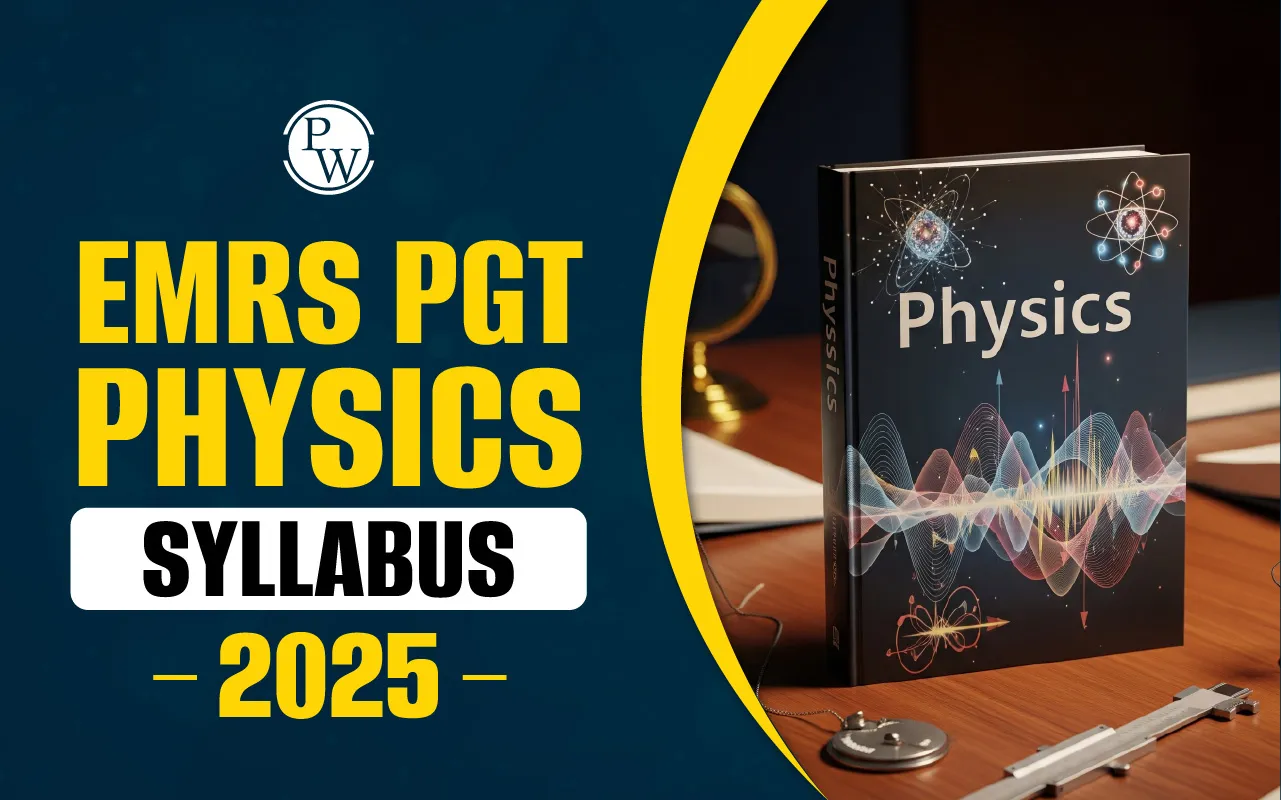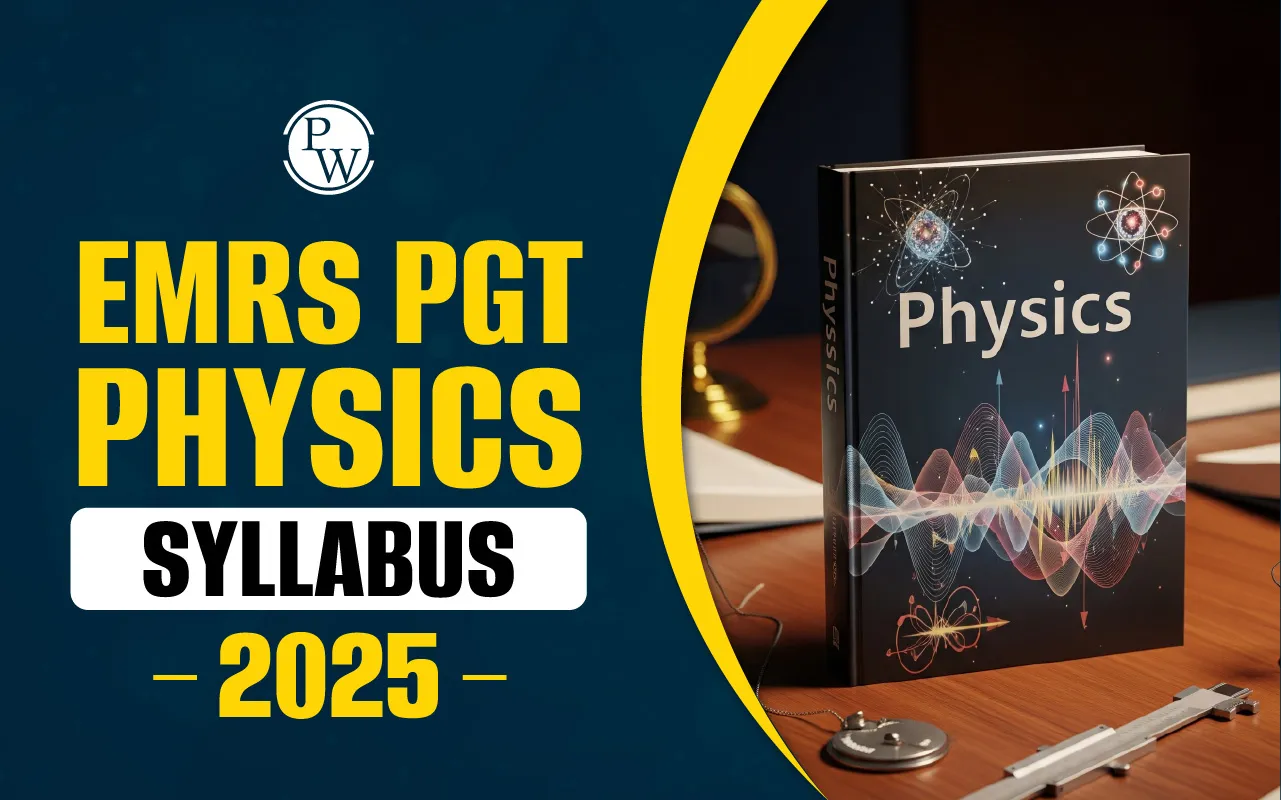

EMRS PGT Physics Syllabus 2025 is essential for candidates aspiring to become Post Graduate Teachers in Physics at Eklavya Model Residential Schools (EMRS). It is important for students to understand the syllabus, along with the exam pattern.
EMRS PGT Recruitment 2025 process assesses both teaching aptitude and subject knowledge. Students need to prepare according to the EMRS PGT Physics Syllabus PDF. This ensures that you cover all important topics in a structured manner and are familiar with the types of questions asked.
EMRS PGT Physics Syllabus 2025
EMRS PGT Syllabus for Physics is included in the official EMRS PGT Notification 2025 released by the National Education Society for Tribal Students (NESTS). For the Physics domain, 198 PGT positions have been released.
The syllabus includes two main stages, i.e., Tier 1 and Tier 2. Tier 1 assesses general awareness, reasoning, ICT skills, and pedagogy. Tier 2 section focuses on the subject domain. For Physics, concepts such as mechanics, thermodynamics, electromagnetism, optics, and modern physics are included.
EMRS PGT Physics Exam Pattern
The EMRS PGT Physics exam is conducted in two tiers to assess both general aptitude and subject expertise. It is important to understand the EMRS PGT Physics exam pattern to focus on important sections.
Tier 1 is the preliminary stage that evaluates general awareness, teaching aptitude, ICT knowledge, language skills, and basic domain knowledge in Physics. It is qualifying in nature and helps shortlist candidates for Tier 2.
Tier 2 is the Subject Knowledge Examination (Physics). It evaluates in-depth Physics knowledge and your ability to handle both objective and descriptive questions. Tier 2 marks determine the final selection.
| EMRS PGT Physics Exam Pattern | ||||
| Section | No. of Questions | Marks | Time (Minutes) | Nature |
| Objective Questions | 40 | 40 | 180 | MCQs |
| Descriptive Questions | 15 | 60 | Short/Long Answers | |
EMRS PGT Physics Syllabus 2025
EMRS PGT Physics Syllabus 2025 includes topics from both the Tier 1 domain knowledge section and the Tier 2 subject knowledge examination.
EMRS PGT Physics Syllabus 2025 Tier 2
-
Units and Measurements
-
Motion in a straight line
-
Motion in a Plane
-
Laws of Motion
-
Work, Energy and Power
-
Motion of System of Particles and Rigid Body & System of Particles and Rotational Motion
-
Gravitation
-
Mechanical Properties of Solids
-
Mechanical Properties of Fluids
-
Thermal Properties of Matter
-
Thermodynamics
-
Behaviour of Perfect Gases and Kinetic Theory of Gases
-
Oscillations and Waves
-
Electric Charges and Fields
-
Electrostatic Potential and Capacitance
-
Current Electricity
-
Magnetic Effects of Current and Magnetism
-
Magnetism and Matter
-
Electromagnetic Induction and Alternating Currents
-
Electromagnetic Waves
-
Ray Optics and Optical Instruments Ray Optics
-
Wave optics
-
Dual Nature of Radiation and Matter
-
Atoms and Nuclei
-
Semiconductor Electronics
EMRS PGT Physics Syllabus PDF
You can easily download the EMRS PGT Physics Syllabus PDF from here. The PDF includes a detailed syllabus for Tier 1 and Tier 2 exams. It includes a syllabus for sections like teaching aptitude, domain knowledge, and subject-specific Physics concepts.
EMRS PGT Notification 2025 includes the official syllabus. You should complete the entire syllabus and don't leave out any important chapter. You can download the EMRS PGT Physics Syllabus PDF from here:
Tips to Prepare for EMRS PGT Physics Exam
To prepare effectively for the EMRS PGT Physics Exam 2025, you need to follow a structured strategy. Below are some tips through which you can prepare for EMRS PGT:
-
Study all topics mentioned in the Tier 1 and Tier 2 syllabi. This ensures that every section is covered, including General Awareness, ICT, and subject-specific Physics.
-
Allocate time accordingly for theory, problem-solving, and practice questions. Prioritize high-weightage topics and difficult topics to improve efficiency.
-
Solve past papers and mock tests to familiarize yourself with the exam pattern, question format, and difficulty level. It will also help in improving speed and accuracy.
-
Revisit important chapters and formulas regularly to retain concepts. Short notes or mind maps are useful for revision.
-
Tier 1 includes teaching aptitude and ICT. Practice conceptual questions and scenarios related to classroom management, pedagogy, and basic technology knowledge.
